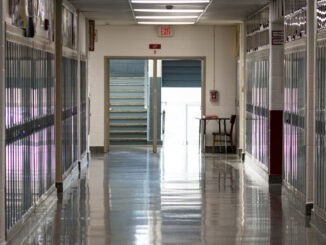
According to an analysis of national attendance data, up to 34,000 children could be attending school on part-time timetables in the UK
The research also suggests that when considering pupils in alternative forms of education, there may be over 100,000 students in state-funded schools who are deemed unsuitable for a full-time timetable in mainstream or special schools.
The analysis conducted by FFT Education Datalab examined patterns of absence in attendance records, following Ofsted’s annual report in December which raised concerns about the frequent use of part-time timetables by schools that struggled to manage the additional needs or behavior of certain students.
Some schools, as reported by Ofsted, viewed part-time timetables as an alternative to exclusion. Inspections also revealed that children and young people with special educational needs or disabilities were more likely to be placed on a part-time schedule.
Dave Thompson, the chief statistician at FFT Education Datalab, stated that this analysis was the first attempt to calculate the number of children on part-time timetables by examining schools’ use of the “C” code, which denotes “authorised leave of absence.” Researchers gathered data from 10,000 schools in England using the FFT Attendance Tracker, covering the first two terms of the 2022-23 academic year.
They focused on students who were “repeatedly absent with Code C” and identified those who were absent for at least one or two days in four different weeks over a continuous six-week period.
Thompson mentioned in a blog post that the highest rates were found among Year 11 students, with 1% of pupils exhibiting part-time timetable patterns, similar to rates for the controversial “Code B” used for off-site education.
Among primary-aged students, those in Reception were most likely to display patterns consistent with being on a part-time timetable.
He further stated, “In total, when extrapolating the figures to the national population, we estimate that around 34,000 students across the country may have had a part-time timetable, resulting in their absence from school for at least one day a week until the end of the spring term in 2022-23. Out of these, 18,000 might have had a part-time timetable with absences of at least two days a week.”
Combining these figures with the Department for Education’s data on students in state-funded alternative provision and those attending non-state-funded provision, the analysis concluded that there could be “100,000 students in state-funded education for whom full-time education in mainstream or special schools is not considered suitable or appropriate.”
However, Thompson added a note of caution, stating, “We assume that these students are attending part-time, but we cannot know this for sure. We also do not know the reasons behind their part-time attendance. Is it due to behavior intervention? Could they be homeschooled the rest of the time (referred to as flexi-schooling)? Or is there another reason?”
He confirmed that students with education, health, and care plans were “over-represented in the group exhibiting the pattern of a part-time timetable.”
Thompson expressed his desire for the analysis to serve as a starting point for discussion. He emphasised, “We expect people to react and contribute to the discussion. We are interested in exploring circumstances beyond part-time timetables where students might be regularly absent with authorized leave of absence.”
Julie McCulloch, the director of policy at the Association of School and College Leaders, responded to the findings by acknowledging that part-time timetables could be beneficial in aiding a student’s return to full-time education. However, she emphasised that schools were facing significant challenges in improving attendance due to a lack of necessary support.
McCulloch stated, “Budget constraints make it challenging to provide the pastoral and specialist support required to help some students attend more regularly. Additionally, there are lengthy waiting times for children’s mental health services, and attendance support services provided by local authorities have been severely impacted by government funding cuts.”
She called for additional funding to be allocated to help schools reduce absences and ensure that no child misses out on crucial learning and development unnecessarily.



Be the first to comment